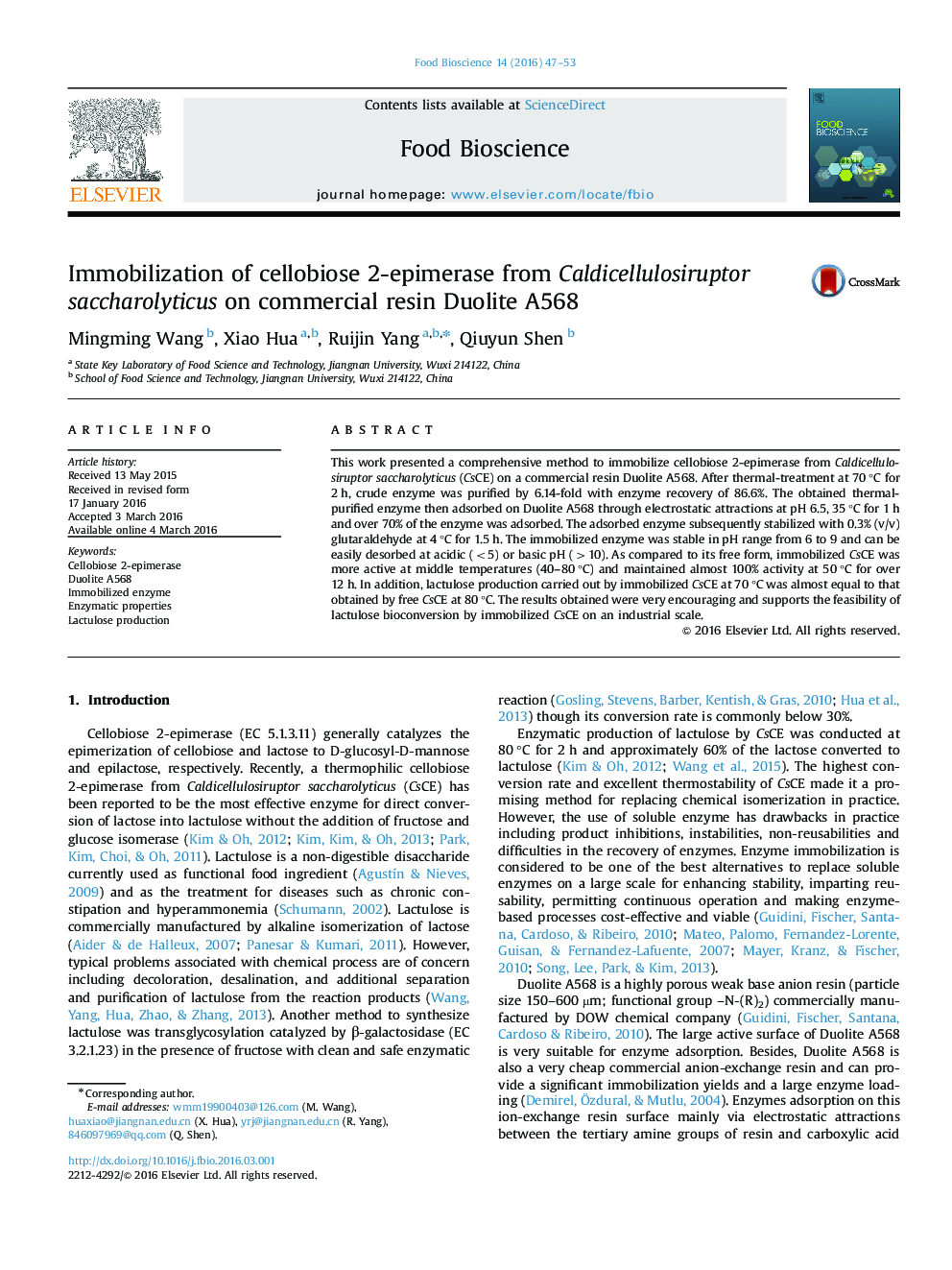| Article ID | Journal | Published Year | Pages | File Type |
|---|---|---|---|---|
| 19678 | Food Bioscience | 2016 | 7 Pages |
•After thermal-purification, CsCE was immobilized on Duolite A568 through ionic attraction and glutaraldehyde crosslinking.•Crude enzyme after thermal-treatment at 70 °C for 2 h was purified by 6.14-folds and used directly for immobilization.•Enzyme adsorption on resin was carried out at pH 6.5, 35 °C for 1 h and over 70% of the enzyme was adsorbed.•Immobilized CsCE exhibited excellent thermal and recycling stability.•Immobilized CsCE presented higher activity at 40–70 °C and enabling it to produce lactulose at lower temperature.
This work presented a comprehensive method to immobilize cellobiose 2-epimerase from Caldicellulosiruptor saccharolyticus (CsCE) on a commercial resin Duolite A568. After thermal-treatment at 70 °C for 2 h, crude enzyme was purified by 6.14-fold with enzyme recovery of 86.6%. The obtained thermal-purified enzyme then adsorbed on Duolite A568 through electrostatic attractions at pH 6.5, 35 °C for 1 h and over 70% of the enzyme was adsorbed. The adsorbed enzyme subsequently stabilized with 0.3% (v/v) glutaraldehyde at 4 °C for 1.5 h. The immobilized enzyme was stable in pH range from 6 to 9 and can be easily desorbed at acidic (<5) or basic pH (>10). As compared to its free form, immobilized CsCE was more active at middle temperatures (40–80 °C) and maintained almost 100% activity at 50 °C for over 12 h. In addition, lactulose production carried out by immobilized CsCE at 70 °C was almost equal to that obtained by free CsCE at 80 °C. The results obtained were very encouraging and supports the feasibility of lactulose bioconversion by immobilized CsCE on an industrial scale.
